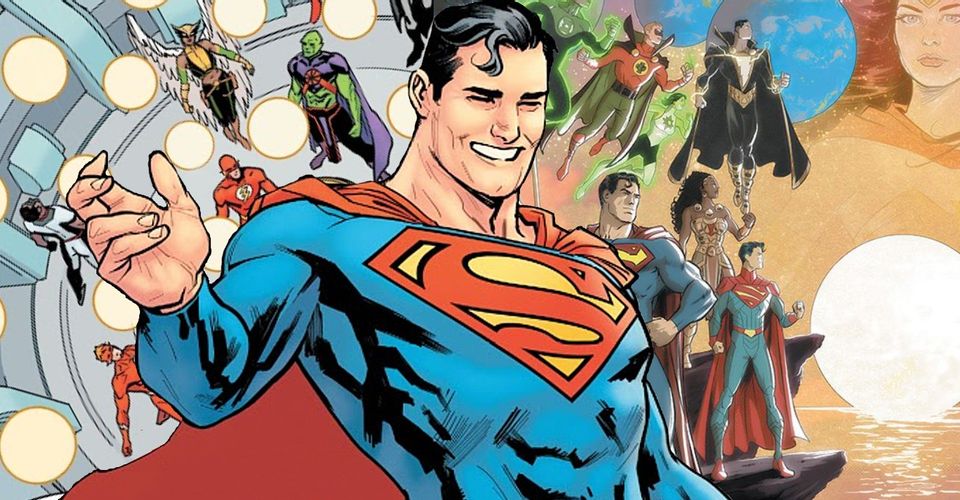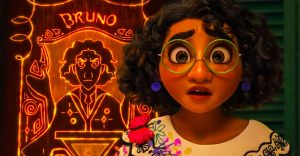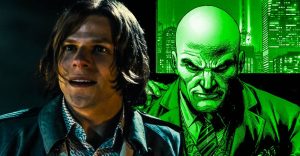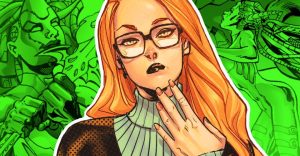DC’s Omniverse Reboot: What Fans Need to Know for Infinite Frontier

Warning: contains spoilers for Infinite Frontier #0!
DC’s Infinite Frontier is here, revealing the new shape of the DC Omniverse to excited fans, and kicking off a fresh status quo that is likely to shape the comic giant’s stories for years, if not decades, to come. Infinite Frontier #0 – from a murderers’ row of DC’s top talent – explores the new status quo of the comic giant’s main timeline and its place in the Omniverse, but DC actually already explained even more of how this brave new era will function.
The apocalyptic Dark Nights: Death Metal saw reality brought to the brink of ruin. DC’s collection of alternate realities, known as the Multiverse, went up against its dark counterpart, and the very fabric of DC’s continuity was reshaped as a result. Thanks to Wonder Woman’s sacrifice, a unique Multiverse – described by Lex Luthor as DC’s own sort of Omniverse – was created, beginning a new, rebooted continuity for all DC’s comics, but one that treats the idea of continuity differently than ever before.
What is the Omniverse?

Up until recently, DC’s mainstream reality existed within the Multiverse. A Multiverse is a collection of universes – or alternate realities – often bearing strong similarities to each other as well as differences that set them apart. For years now, DC’s continuity has represented the Multiverse as 52 realities existing on different vibrational frequencies. Earth-0 was the mainstream DC Universe, Earth-1 a universe where DC’s most famous heroes were just beginning their careers, and Earth-3 the home of evil versions of those same heroes. The Omniverse is functionally a collection of Multiverses, but DC’s new version knocks down all the walls between them, creating an ever-expanding web of new, interconnected realities.
If you’re struggling to see the difference, DC’s ‘Infinite Frontier’ concept is really the key. There are no longer a limited number of alternate realities, but a functionally infinite number, with more being created every moment. Dark Nights: Death Metal #7 has one of the reality-shaping Hands inform Wonder Woman that, “We have seen, too, that perhaps there is no place for walls or boundaries when it comes to your kind. So we shall remove them.” Future State bore this out, as it still seems like it takes the right tech or powers to travel between realities, but the bar appears to have been lowered significantly. Alternate universes no longer seem like places for heroes to visit on particularly strange adventures, but rather mega-civilizations DC’s mainstream reality will have to learn to live alongside.
What’s different?

Again, ‘Infinite Frontier’ really describes itself here. The Omniverse is a new frontier for DC’s characters; they don’t know what’s out there, but it promises infinite opportunity and infinite threat. Having gained some perspective from the near-destruction of everything, a group of heroes and villains – Hawkgirl, Martian Manhunter, Mr. Terrific, Vandal Savage, Talia al Ghul, and Lex Luthor – have banded together in a secret base on the dark side of the moon named the Totality. They’ll be responsible for dealing with the potentially huge threats that come with life in a way bigger cosmic ecosystem.
The structure of DC’s core Multiverse – the familiar worlds from which new realities are now budding off – has also changed. The Dark Multiverse – a swirling mass of ‘bad ideas’ that never quite became their own realities, but can still pose a threat – lurks below, and Earth-0 is no longer the center of the Multiverse. That honor belongs to two new planets. One, described as an Alpha World, has been named Elseworld. If that sounds familiar, it’s because DC has traditionally published stories of possible alternate realities (like the one where Batman becomes a vampire) as Elseworlds, suggesting it might be the energy source creating all these new realities, but all fans really know for now is that it’s some version of Earth. Infinite Frontier #0 revealed the other planet is Earth Omega – intended as the prison of uber-villain Darkseid, but now tragically the site of his terrifying rebirth.
The Totality reveal their sensors indicate that many characters have also been resurrected, both those killed in Dark Nights: Death Metal and those lost before. As with any reboot, the new Omniverse offers writers an easy way to bring back dead characters fans want to see again, and rumors are still swirling about who may make a reappearance as the initiative continues, with Bruce Wayne’s butler Alfred Pennyworth the number one contender.
What’s the same?

Surprisingly, this is really the big question, and the one where the answer could ultimately change comics continuity the most. DC’s continuity has been in flux for a decade now, with the New 52 and Rebirth reboots drastically changing which past stories were in or out of continuity, much to fan irritation. The events of Dark Nights: Death Metal healed this process, bringing every DC story back into continuity. The new motto of DC’s reality is “it all matters.”
In practical terms, this means that’s it’s official canon that DC’s heroes have lived multiple versions of their own lives, and will start remembering those experiences in ways that make them a unified product of their most popular and influential stories. Hawkgirl explains that as Hypertime heals from its recent damage, the heroes will remember flashes of alternate pasts and even alternate futures. Sound confusing? It’s actually the reverse: DC’s in-world continuity now works exactly as comics always have to fans.
Every story is back in continuity, it all happened, and it’s all being carried forwards. It makes sense that past events will carry a level of influence roughly equivalent to their impact on how fans see the character – Superman is likely to more strongly recall his romance with Wonder Woman than the reality in which he was raised in Russia – so effectively, every DC hero has now read their own comics, coming to a unified, big-picture idea of who they truly are.
The intent seems to be to embrace everything that matters about each character, making the DC Omniverse more fun for old fans (whose favorite stories are no longer erased from canon) and new fans (who don’t have to sift through the latest tweaks to continuity to jump aboard.) These memories of multiple realities also allow DC to fudge details that fans want fudged. Batman is still relatively young, so how has he had time to train so many consecutive Robins? Past continuities bent over backwards to justify this, but the new continuity can just accept the fact that Batman and his allies remember multiple lifetimes worth of experiences.
What comes next?

First, “it all matters” applies to more than past stories. Future State borrowed characters from other non-comic properties like Batman: Mask of the Phantasm, Teen Titans, and Teen Titans GO! The message seems to be that DC’s reclamation of its past also applies to continuities that were never official in the comics, allowing them to embrace any good ideas they want to use going forwards. Slated projects like Batman ’89 and Superman ’78, which pick up the continuities of those live-action movies, seem intended to tap into the attitude that all of DC’s wider media output is back in play, even those parts unlikely to directly interact with other realities in the Omniverse. This may even be the first step to connecting their comic and ongoing movie realities.
But DC also seem intent on treating the Infinite Frontier as the next level of exploration and storytelling. DC’s Future State heavily implied that moving between the familiar realities of the former Multiverse will become a lot more common – for instance, the new Flash, Jess Chambers, is specifically able to empower others to do so – and there’s the suggestion that “it all matters” also means different realities will be more likely to affect each other in major ways. DC have toyed with this idea before, but Infinite Frontier feels like a reinvestment in the idea that heroes will now face multiple levels of threat: things from within their own reality, things from other realities, and things that affect multiple realities at a time.
Like any comic event, the proof will be in the stories that emerge, but early rumors that DC are abandoning continuity seem to have been overly pessimistic. While cynical fans will assume that “it all matters” means “nothing really matters” until proven otherwise, there’s plenty of reason to think that the Infinite Frontier era will redefine DC Comics for the better for years to come. Where previous reboots have tried to create a new official canon, DC’s Omniverse seeks to change how canon itself is seen, bringing its continuity far more in line with how fans truly experience comics. The days of trying to work out what did or didn’t ‘officially’ happen are over. Every story happened, every story matters, and what happens next will depend – as it always has – on the degree to which every creative team is inspired by what came before.
About The Author


















